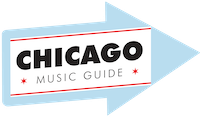STREET LEVEL GUITAR PART 2
By Mike O’Cull
THE REAL BASICS
One of the big questions that new guitar students ask is ‘What do I need to know to start playing?’ There are as many answers to that question as there are teachers in the world, each promising the student that THIS is the vital info needed to get going and play the guitar. Some think reading music is where playing should begin as it often does for piano and violin students while others think endless technique practicing is the most important thing for newbies to focus on. I understand both of these approaches and learned music reading first in my own beginner years and I’m glad that I am still a reading guitar player. Reading, however, does not equal playing, as I learned early on in my teaching career when I would throw Mel Bay and Hal Leonard at teenage and older students, only to have them pretty much refuse to do it.
Why was this unsuccessful? Because what students are after is the musical EXPERIENCE, not a long math class they can’t get out of. They want to replicate their favorite tunes, play with others, and feel like they are getting somewhere and making progress with their playing, not standing at the bottom of some un-climbable technical mountain they don’t feel they can conquer. This led me to question many cherished assumptions about how students learn the instrument and how I can best teach them to keep their heads in the game, as well as their hands and ears. What I figured out is that those old-time books usually work the best for students less than 12 years old, as they give a young player an excellent road map and learning structure to work from. Students above 12 need a different approach, one that not only teaches musical basics, but grows the students’ confidence in their new skills and taps into the inherent musicality most people possess. I didn’t know it at the time, but this was the beginning of Street Level Guitar.
The result of all my thinking was the part of my program called ‘The Real Basics’. There are two parts: Physical and Musical. All of music is both physical and musical, if you think about it, and it is often good to divide the two at the outset. The Physical portion consists of what I call ‘The Beginners’ Toolkit,’ which is a ground-floor serving of the things we make songs out of, like open, power, and barre chords, pentatonic and blues scales, and strumming and picking skills, along with TAB and chord block reading, how to tune, and a tiny bit of ear training. Students starting from scratch spend 4 to 6 weeks working on and memorizing this material. The Musical portion of our journey happens at the same time as the Physical and consists of one main thought: Be Rhythmically Steady. This is really the most important thing at this stage and provides an easy focus for practice sessions. Don’t slow down, don’t speed up, and don’t stop. Why is this so important? Because that simple repeating beat you tap your foot to holds the band together and we all have to be able to play in time to it for any other aspect of music to really matter. Steady rhythm is more important than knowing a million chords or scales, having big amps, cool hair, or overly tight trousers because rhythm is the most elemental part of music and being steady at it allows us to play along with others and our chosen recordings. If a student can get steady with their chord changes, scale patterns, and first songs, the rest can all be learned. If there is no steadiness, not much else is going to help. Once a student elevates their game to this point, much of the more advanced material can be attained with less gnashing of teeth than if one tried to learn a whole Dream Theater CD before being able to play a Green Day song all the way through.
Guitar playing is a mostly physical challenge at the beginning. We must focus on getting our hands to work and making some good sounds. Playing will always come first and understanding will always come later. If we can achieve steadiness at medium tempos, musical doors will start to open and most students will realize that it is possible for them to get as good as they choose to get. Once you have learned that, you have mastered The Real Basics. For more info on this or any other part of Street Level Guitar or lessons in general, drop me a line at [email protected] and please visit www.mikeocull.com and www.facebook.com/StreetLevelGuitar. See you next month!!

